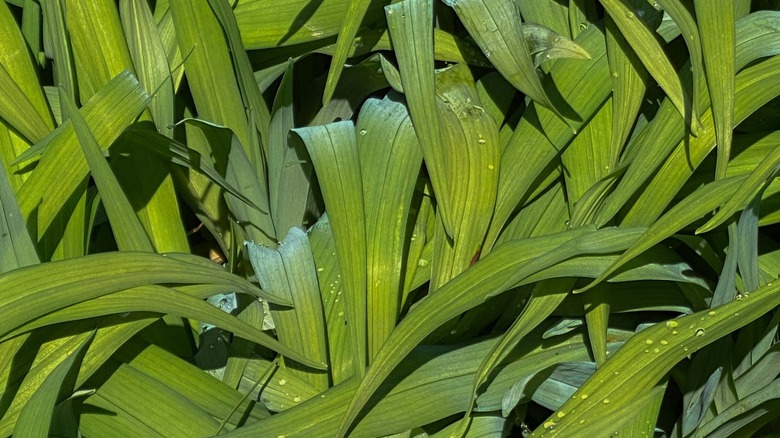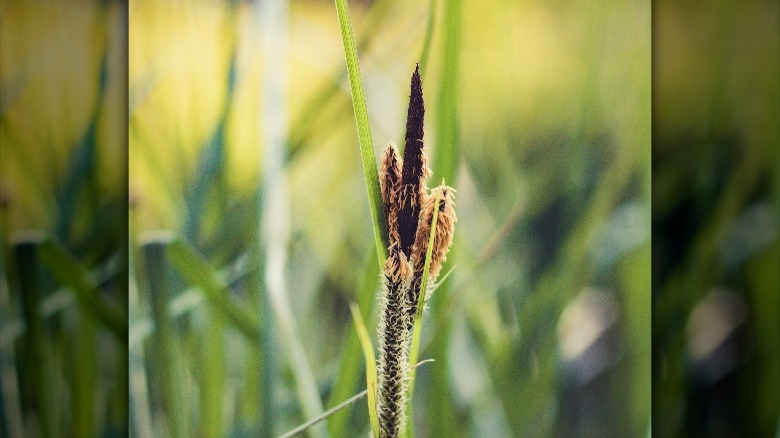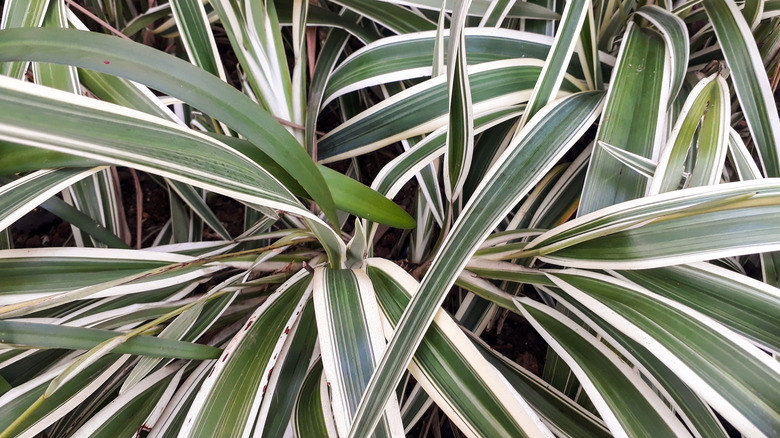The Sustainable Grass Alternative Landscaping Experts Swear By For Your Home Lawn
As eco-friendly lawns grow in popularity, horticulturalists are recommending alternatives to grass that require fewer resources and less maintenance. One of these is Carex, a bladed plant that thrives with less water, mowing, and fertilization than normal lawn grass. Carex species are best known for their narrow, green leaves, which resemble grass. They can create a lush, carpet-like appearance and tolerate foot traffic.
According to garden and landscape expert Lina Cowley, "many carex species are drought tolerant, which helps conserve water and makes them well-suited for regions that experience water scarcity," (via Martha Stewart). This suitability for areas with harsh weather conditions and drought goes very well with their low maintenance needs. Carex lawns also offer several ecological benefits. Their dense root systems are useful for soil erosion control and the species enhance the diversity of a region's ecosystem. "Carex plants provide habitat and food for pollinators and other beneficial insects, contributing to local biodiversity," explains Cowley.
Alternative species to consider
Carex species are adaptable and can grow in a wide range of soils and conditions, but some have their preferences, so consider your region first when choosing a variety. Carex pensylvanica, or Pennsylvania sedge, grows best in the eastern and central parts of the U.S. because it is adaptable to various weather conditions and soil types. Carex texensis, or Texas sedge, is the best choice for the heat and humidity in the south, whereas Carex tumulicola, or Berkeley sedge, is better for the dry and moist conditions of the West.
Carex with variegated leaves is an evergreen mix of green and white that can be depended on throughout the year for its color. If you don't want a green lawn, certain types of Carex have bronze leaves that come in a light brown shade, which can be kept as is or mixed with other colored leaves and foliage. It does best when planted in a warm, sunny spot with moist soil all summer.
Planting and care tips
To start a Carex lawn, clear the entire area and prep it for planting with organic matter to improve the soil — the plant prefers being planted in the sun or light shade with moist soil. Next, loosen the soil, spread your Carex seeds properly, and cover them lightly with some soil. Keep the lawn area watered and moist until it starts to grow. Prioritize good drainage because medium levels of even moisture are best.
Note that the species might have different spacing needs. Carex pensylvanica, for example, grows in clumps and is best planted in masses. Because it's so low maintenance, you won't have to water, weed, or fertilize your Carex lawn often and can keep the mowing to only a few times a year. You can trim them after every season so that there is new growth. While there might be some dieback in the summer seasons, you can expect Carex to come right back to life in the fall.


